In Part I, Part II, and Part III, I listed and analyzed seven options, analyzed them and also pointed out that the President’s 14th amendment option, actually makes turning to the 14th as a justification for continuing to issue debt beyond the ceiling, a last resort, and also places an obligation on the President to exhaust other available options, whose legality is probable, but not finally determined by the Supreme Court. But, in his recent Press Conference, the President also failed to recognize any differences among the options in relation to his main point: that loss of public confidence caused by legal challenges would affect sales of debt instruments and other options including Platinum Coin Seigniorage (PCS).
Differences in levels of legal uncertainty among the options would surely affect the confidence issue. Option 1, selective default, seems legal, if not followed by Fed forgiveness of Treasury debt. It would probably have the effect of a partial government shutdown. But, as long as there’s no default on repayment of debt to everyone but the Fed, confidence related to buying Treasury debt should not be affected.
Option 2: the exploding option, is one of those that might result in both a legal challenge, and some uncertainty in markets, but I don’t think very much uncertainty, since whatever the Supreme Court decides about the legality of this, it’s hard to see them being able to do anything about it except ordering the Treasury and the Fed to stop breaking the law prohibiting the Fed granting credit to Treasury. Since the Treasury would be using the exploding option to acquire reserves from the Fed, but would not be issuing debt instruments, the Court wouldn’t be able to decide that the Government had no obligation to repay illegally issued Federal debt, which is the scenario the President used in his News Conference.
Option 3, is Platinum Coin Seigniorage (PCS). Legal questions about the coin have been raised, but as I said in Part II, the preponderance of opinion is that the coin is legal and will survive if challenged.
So, the question becomes whether a challenge to it will create a lack of confidence in markets affecting Treasury bonds? I really doubt that, however, since the “house ownership” metaphor, used by the President doesn’t apply to the coin, either. Its practical force comes from the idea that the market will reject debt instruments offered for sale after the debt limit is reached. However, the primary initial use of the coin would be to pay down the debt level, so no debt issuance would be involved in its use. Why should there be a problem with “bond market confidence” when debt repayment is continuing?
Only new creation of reserves by the Fed would be involved. So, the issue of confidence affecting debt marketability doesn’t arise in this case, since the private markets would not have to “buy” new reserves offered by the Treasury after the debt limit is reached, as they would questionable debt instruments issued by the President.
And certainly while legal challenges are going on, the President could be drastically reducing the debt subject to the limit by using coin proceeds to pay back debt, increasing confidence in markets with every significant payoff. Of course, this depends on whether the President mints a High Value Platinum Coin (HVPC), say $60 Trillion in face value, rather than “a small ball” TDC alternative, but that’s his choice, after all. So, in the end, whether there’s a problem with bond market confidence depends, in the end on the politics of choice, and not whether he uses PCS or not.
As for the Fed, it may or may not cooperate with the Executive on crediting the coin. But the law provides that in cases of disagreement in interpretation between the Fed Chair and the Secretary of the Treasury, that the view of the Secretary shall prevail.
In other words the Fed can be made to cooperate when it comes to crediting the coin, and it is highly doubtful that if the Fed is between the rock and the hard place of crediting the coin or allowing a default, that it will then choose the latter and risk the financial system collapsing. The Fed, after all, is pretty “chicken” about financial system crashes, and is likely to embrace its own version of There Is No Alternative (TINA), since, in addition to the rock and the hard place, the Fed’s compliance is unambiguously required in the law.
If the President did mint a really big coin, say the $60 T one, and then quickly paid off the intragovernmental and Fed debt, about $6.7 Trillion, and continued paying off short-term debt, and if the Court then granted standing, and, after six months or so, for example, declared his action unconstitutional, what would be the remedy the Court could implement to unwind the action, and the repayment of about $2 Trillion in debt to non-Federal entities? The Court might relatively easily be able to undo the $6.7 Trillion in repayment, but once the debt to non-Federal entities is redeemed; then it is redeemed. The former US bondholder “creditors” aren’t giving their money back.
As a practical matter the Court can’t do anything about that, since the reserves paid out are in private hands. Further, even if the Court ordered that the Treasury return the reserves used to repay the intragovernmental and Fed debt to the Fed and to issue new bonds to restore the status quo, all that would do is stop the President from paying down further debt, but still not eliminate the headroom under the debt ceiling he had created by paying down debt held by non-Government entities. So, even in this case of extreme reaction by the Court, he’d still improve the debt limit situation by minting the platinum coin, without taking the chance that the markets might reject the debt instruments without requiring higher interest rates.
Option 4, is the 14th amendment option nullifying the debt ceiling. The President has a point here, that if this were challenged in Court then bond markets might feel uncertain about buying bonds issued during the period the debt was exceeding the ceiling. However, even if the Court ruled not only that the debt issuance was illegal, but also that the debt instruments should not be honored, a very long-shot finding, I think, does anyone seriously think that the Congress would cause a default by refusing to guarantee those bonds after the fact of Treasury’s issuance of them? If you believe that, then I have the proverbial pretty big bridge to sell you.
The uproar would be far worse in that case than it was in relation to the issue of whether Federal workers would get back pay at the end of the shutdown or not. In any event as I said earlier, using the 14th amendment to justify violating the debt ceiling on grounds of constitutionality can only be a last resort when all other options haven’t worked. So, the President has an obligation to try the others before he even turns to this option.
Option 5 is the consols option. If challenged in Court, this is probably the least likely option to be overturned. The law doesn’t prohibit issuing consols, and while anyone with the money can sue over anything, the buyers of consols will certainly evaluate what the chances are that debt instruments of this type can be viewed as violating the debt ceiling, or as prohibited.
I think the chances here are slim and none, and that people would feel very comfortable buying consols because they would be confident a) that the Federal Government would not default on its interest payments, and b) that the consols would always be redeemable in private markets where buyers looking for these kinds of instruments would be willing to buy them. So, I think it’s incorrect to lump consol offerings into the same category as conventional bonds clearly issued in reliance on the 14th amendment and in obvious defiance of the debt ceiling. They would not be nearly as subject to doubt and uncertainty as conventional bonds would be.
Option 6, premium bonds, is another bond option that, like consols, seems to provide a way of escaping the debt ceiling while being less likely to shake the confidence of the bond market. I think that’s true because it’s hard to see what’s illegal about this kind of bond issue. All that’s different is a higher interest rate offering which allows Treasury to sell at a higher price at auction while obligating itself to a lower face value that must be repaid.
However, Matthew Yglesias and Kevin Drum are persuaded that such bonds are “. . . .bound to set off an avalanche of litigation and uncertainty about what’s really what.” Well, anything is possible, of course, but even if there is litigation aimed at this very simple and apparently legal expedient, why would that shake the markets very much? And if they did react with a bit of unsteadiness, wouldn’t there be a good deal less uneasiness than there would be with Treasury Bonds that might turn out to be unauthorized by Congress. I certainly think so.
Option 7, sales of Treasury material and cultural assets, is another option that involves the Treasury getting reserves from the Fed in return for an asset. It is in the same category, in this way, as the platinum coin, and the exploding option. But an asset sale, while possibly having the questionable political aspects I discussed earlier, is simpler and easier to understand than the exploding option, and less “out there” from the standpoint of financial practitioners and economists than the platinum coin. In addition, the Federal Government sells material assets continuously, but not to the Federal Reserve. However, I know of no legal prohibition against such sales. And faced with the choice of making such sales, or Government default threatening an international financial crash, I expect the Fed might well invoke TINA and take the plunge.
I also know of no reason why sales of assets like these would shake confidence in the markets. After all, the Treasury would be doing everything it can do to pay the debts of the United States and would be successfully doing so. So, why should that lead to “. . . an avalanche of litigation and uncertainty about what’s really what.” In Part V, I’ll continue this reply to the President’s TINA claim by summarizing my evaluation of differences among the options.


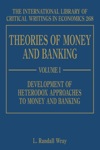
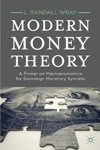
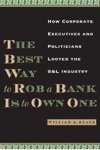
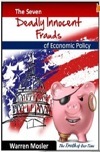
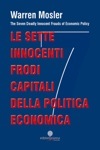
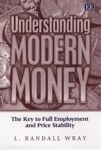
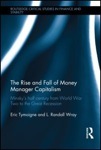

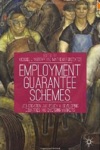

Pingback: Rationalization and Obligation, Part IV: Differ...
Pingback: » Rationalization and Obligation, Part IV: Differences Among Options …
Pingback: Rationalization and Obligation, Part VI: What He Ought to Do, What He Probably Will Do | New Economic Perspectives